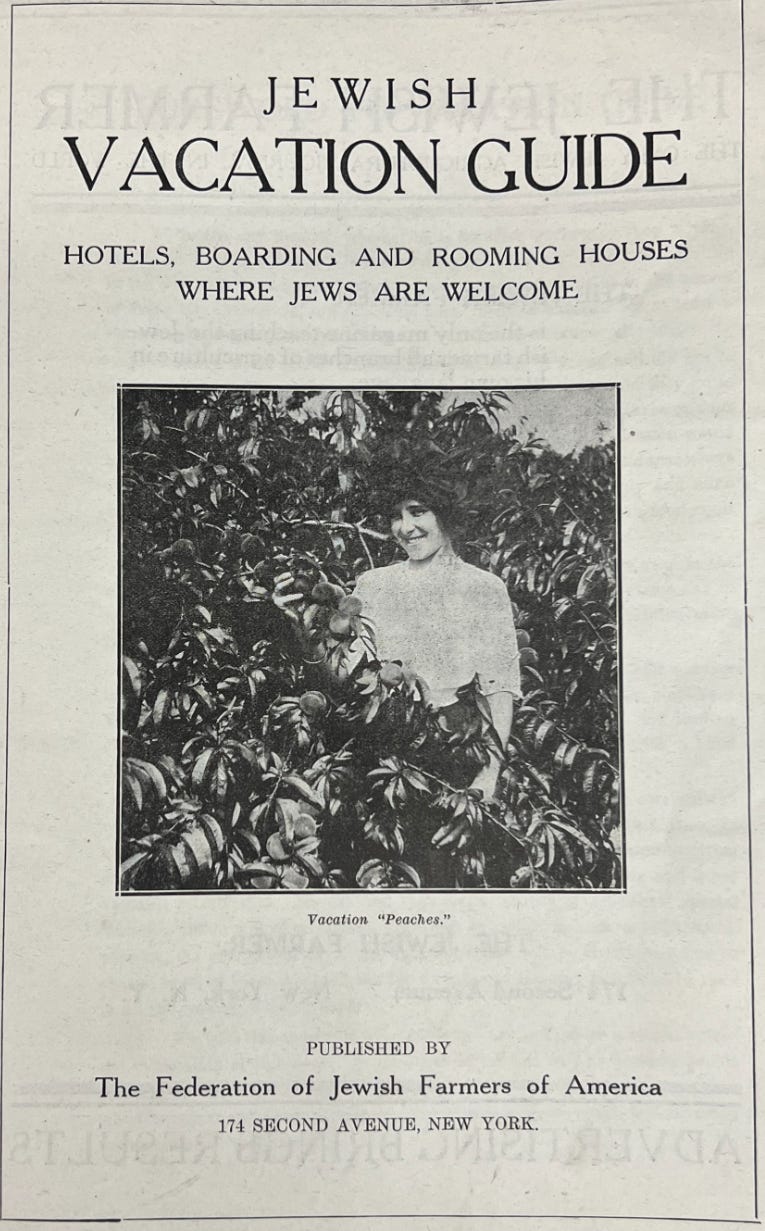Comedy as a Weapon for Survival Pt. IV
This week as a continuation of YIVO's course on the history of Jewish humor, I'm taking you to the Catskills and Miami!
This is the next installment of a series on Jewish humor based on YIVO’s online class on the subject, “Is Anything Okay?” If you missed earlier laughs, catch up on parts one, two, and three. Be sure to take the class to get even more information—it’s free!
Why the Catskills?
We know that the Catskills, a.k.a. the Borscht Belt, served as the birthplace of modern Jewish comedy. If you didn’t, mazel tov—you’ve learned something new just one sentence into this post. Can you believe this content is free?!
Throughout the first half of 20th century, hundreds of comedians performed at Jewish resorts there. It’s where legends like Jerry Lewis, Don Rickles, Mel Brooks, Rodney Dangerfield, and Joan Rivers got their start.
“No Borscht Belt, no Mel Brooks.” — Mel Brooks
But why that specific mountainous region? And why did Jews vacation there? Like most origin stories, it had to do with antisemitism.
By 1908, there were more than 500 Jewish-owned farms in the Catskills. They realized they could make extra money renting rooms. Most hotels and country clubs at the time didn’t accept Jews, so Jews who had a hankering for fresh air and summertime lake hangs (think one of my favorite movies, A Walk on the Moon) vacationed at these resorts. The resorts also served as a safe haven for them to be themselves and not be questioned about how American they were, an issue they faced at the time.

But Jews in the countryside needed their entertainment! As I wrote about in part three, Jews developed a lifestyle on the Lower East Side filled with entertainment: nickelodeons, variety shows, etc. So they brought that culture with them up to the mountains.
The most famous Catskills resort was Grossinger’s, known as a “kingdom of outdoor happiness.” The 1,200-acre, 35-building resort included two Olympic-sized pools, a ski slope, a summer ice rink, and a 3,000-person dining room. All the celebrities and high-profile guests of the day, from Jackie Robinson to Duke Ellington, stayed there, and it was the inspiration behind the film Dirty Dancing.
Here’s a super interesting video about its heyday and eventual demise, including stunning photography of its abandoned state:
Tummlers
Remember my dream job mentioned in part one, the badkhn (the wedding jester who roasts the bride and groom)? Jewish resorts had something like this called a tummler (from the Yiddish verb tumlen טומלען, meaning “to make a fuss, stir up excitement) who greeted guests with jokes. Part comedian, part camp director, the tummler would infuse jokes into announcements of the day’s activities!
Mel Brooks got his start not on stage but as a 14-year-old tummler, waking up guests who fell asleep by the pool. The first reported tummler was a man known as "Windy," who in 1917 led the evening activities at a campfire event attended by garment workers on vacation at the Unity House retreat in the Poconos.
Comedian Profile: Henny Youngman, the King of One-Liners
Born in London in 1906 and raised in Brooklyn, he inspired greats like Rodney Dangerfield. His comedy career began in the 1920s, printing joke cards at a print shop, where he was discovered by famed comedian Milton Berle, who encouraged him to keep writing jokes.
He became a legend with lines like:
A man goes to a psychiatrist.
The doctor says, "You're crazy."
The man says, "I want a second opinion!"
"Okay, you're ugly too!"Why do Jewish divorces cost so much? They're worth it.
My wife will buy anything marked down. Last year she bought an escalator.
Take my wife, please!
Okay, I’m getting tired of wife jokes and all these mentions of male comedians. We need some funny feminine energy in here. YIVO, whatcha got? (Keep reading!)
The Catskills of the South
While the Catskills were the heart of Jewish entertainment in the 50s, Miami was gaining cultural prominence due to the rise of commercial airfare.
Just like me on this cold, dreary December morning, New Yorkers were craving Florida’s sandy beaches and palm trees. Luckily, Florida lifted its ban on Jewish-owned real estate in 1949 (Wow, so kind of them!), making Miami Beach the hot (literally), new It Girl of vacationing, earning the not-so-hot nickname “the Shtetl by the Sea.”
Miami brought a fresh edge, with stars like Belle Barth, queen of the Jewish Miami comedy scene. Barth, a former Catskills performer, made Miami her stage in the ‘50s, with routines full of sharp wit and Yiddish references. She later opened her own club called the Belle Barth Pub.
The mid-20th century was a golden age for Jewish comedians, who were often on radio and TV. But to learn more about that, you’ll have to take the course!
Shabbat Shalom!! Have some laughs,







There were Jewish hotels in 100 miles north of Montreal in a small community. The hotels were roughly from 1920’s to 1950’s. These were very rustic hotels (no en suite bathrooms) and catered to kosher Jews from New York and Montreal. There were three hotels one was owned by my great uncle Morris Rabinovitch. It was called the REEL FRENS INN. Uncle Morris had a small dry good store, including an infamous pinball machine. The hotel closed down although it remained in the family in 1951. Two other hotels existed in the same area. One of the owners put up a dance hall where my father met my mother who was from Montreal. He was from New York in 1929. This was a gathering place for friends and family that was much loved. They also had a windmill that pumped water up to the second floor of the hotel that’s how simple this building these buildings were.
Alexandra Vozick Hans
“Take my husband, please”